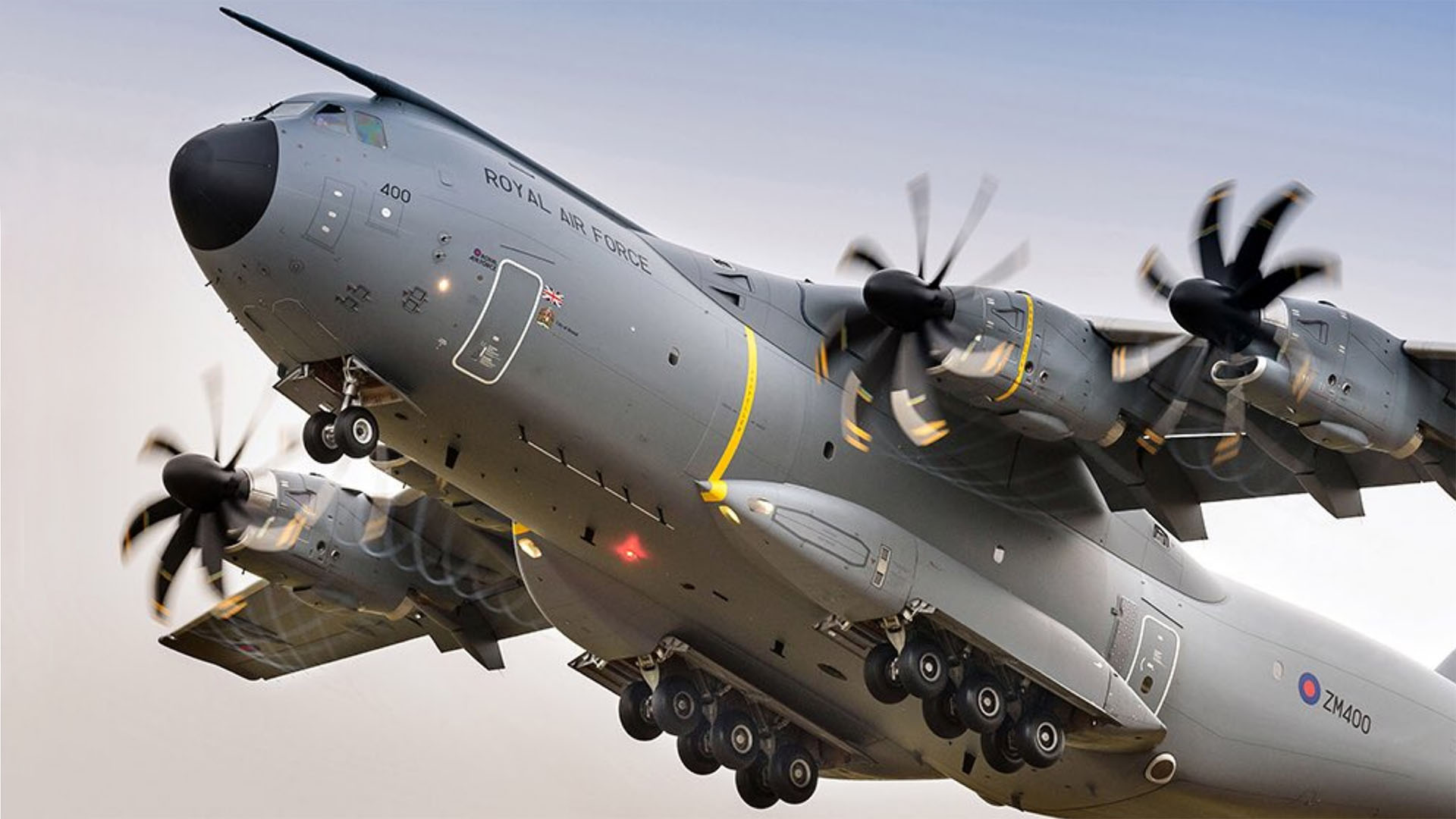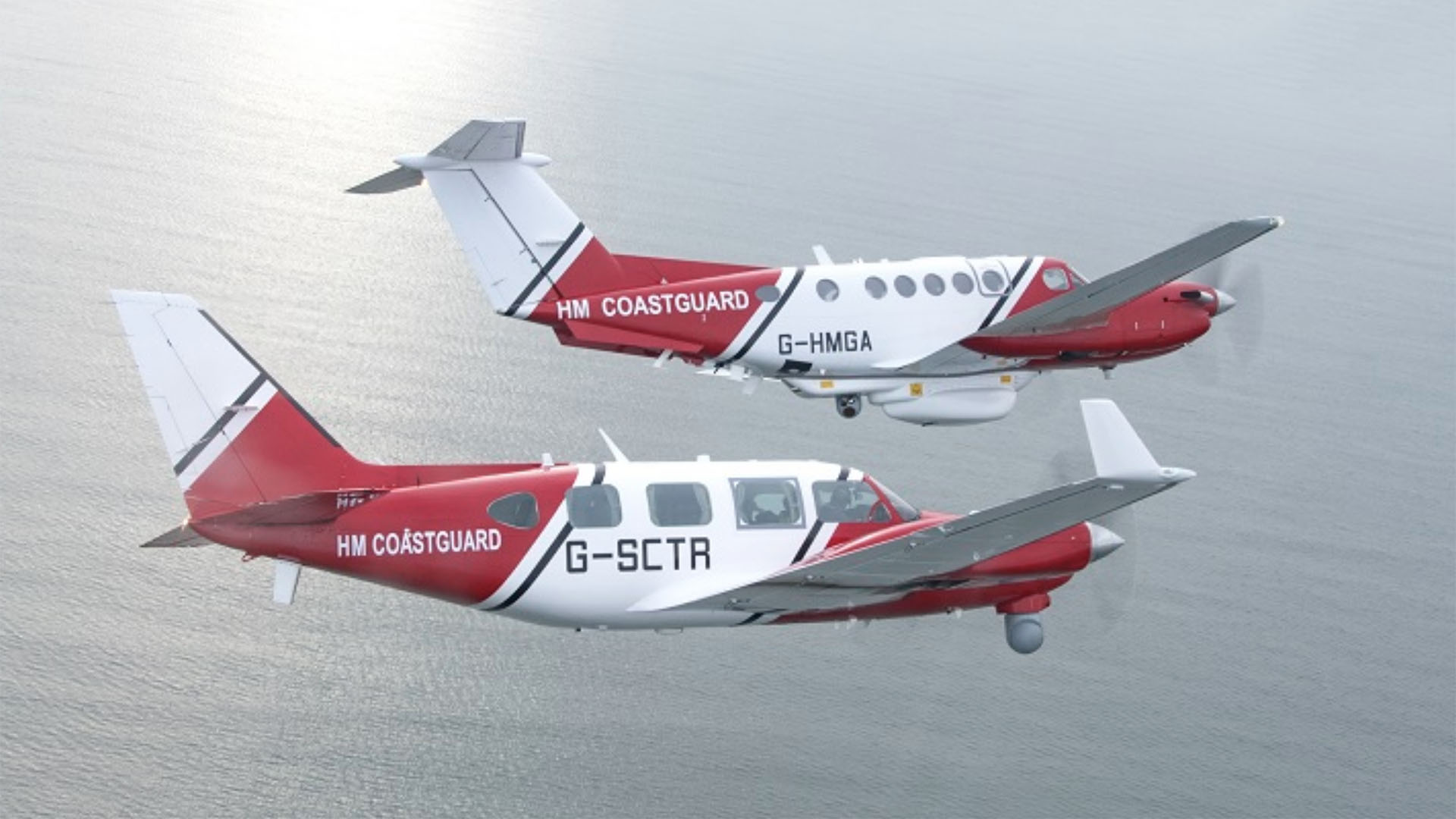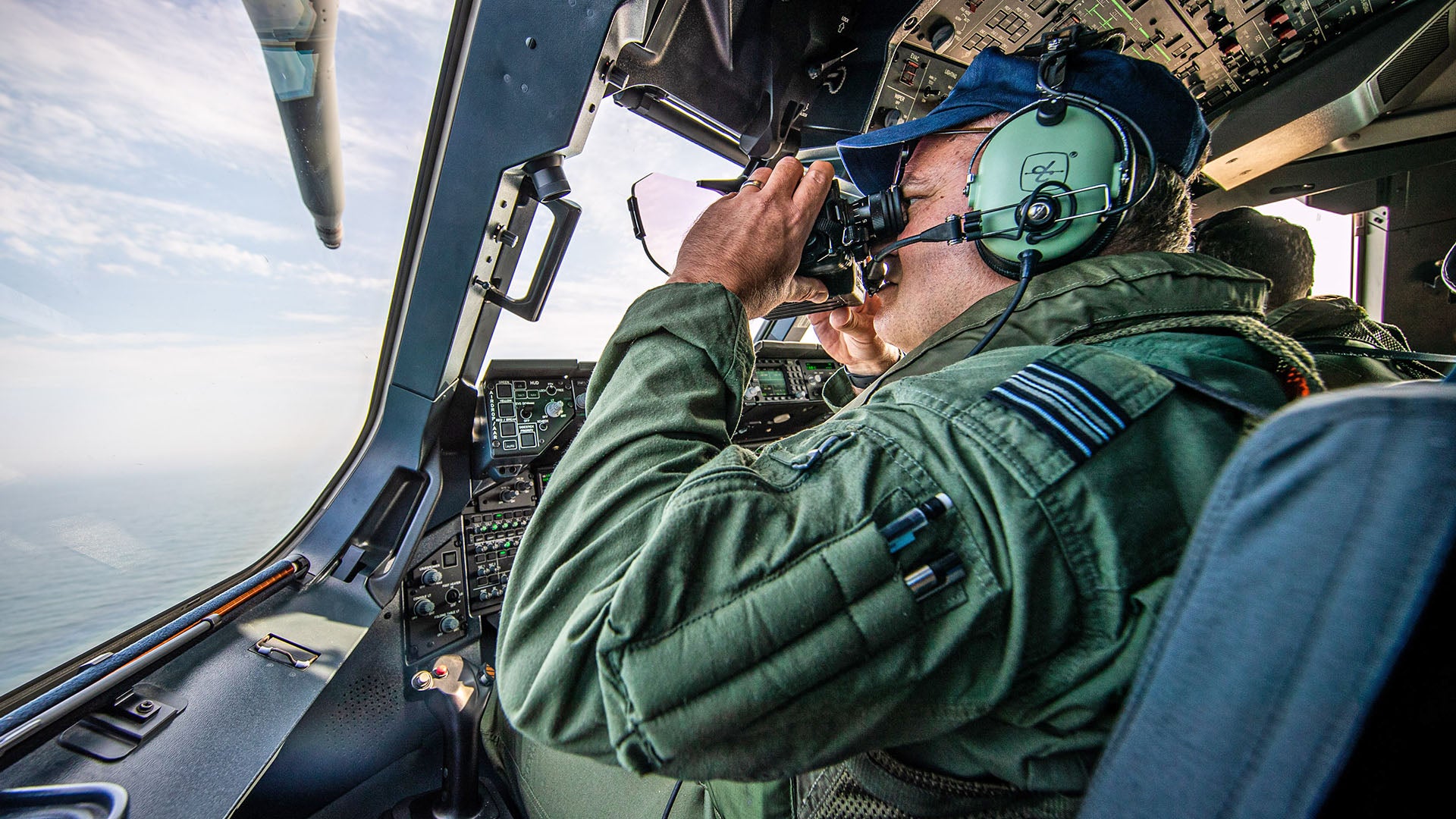A Royal Air Force Airbus A400M transport aircraft, also known to the service as an Atlas C1, has been drafted in to help support the U.K. Border Force cope with a recent surge of migrants aboard small vessels heading across the English Channel towards British shores from France. The aircraft was noted flying low over the sea this morning and imagery from commercially available flight-tracking software showed it flying a complex patrol pattern over the English Channel between Dover, and Calais, France.
The U.K. Ministry of Defense (MOD) said the use of the large transport aircraft had been sanctioned by the Defense Secretary Ben Wallace to help assist the U.K. Home Office. The A400M flew a roughly eight-hour mission from its home base at RAF Brize Norton, in Oxfordshire, on Aug. 10, 2020, as more small vessels attempted to cross the English Channel heading for the Kent coast. The aircraft was joined by another unspecified civilian aircraft supporting Her Majesty’s Coastguard, which also provided surveillance to assist the UK Border Force.
The Airbus was described in a MOD tweet as a “surveillance aircraft,” but while some of its crews are trained in maritime surface search, and while the aircraft’s radar features a ground mapping mode, the A400M is designed primarily as a large transport.
Still, while the A400M may not be a purpose-built maritime patrol aircraft, it does have some applicable mission equipment. The type assumed the U.K. Falkland Islands’ deployed transport role from the C-130J Hercules in 2018. This resulted in the big Airbus gaining the ability to conduct air-sea rescue operations. This capability involves the A400M deploying Air-Sea Rescue Apparatus (ASRA) from its rear cargo ramp. This is designed to enable the aircraft to come to the aid of downed aircrews or mariners in trouble at sea and involves dropping a large Beaufort Mk 20 liferaft.
The video below shows the flight clearance activities for this capability.

While the A400M seems an unlikely fit for this mission, there are some sensible arguments for its use in this case. The aircraft’s ability to deploy liferafts in the event of the often overloaded small immigrant vessels getting into trouble is clearly an important consideration. This coupled with the crew’s ability to use the aircraft as a platform to conduct relatively rudimentary surveillance by simply looking out of the windows.

The issue of boats crossing the English Channel has been in the public spotlight recently. “The number of illegal small boat crossings is appalling and unacceptably high,” Home Secretary Priti Patel said recently on Twitter: “The figures are shameful.”
This harder line on illegal people trafficking across the English Channel has recently been underscored by the appointment of a “Clandestine Channel Threat Commander” — a new role leading the U.K.’s response to tackle illegal attempts to reach the country. “He will collaborate closely with the French to build on the joint work already underway, urgently exploring tougher action in France, including stronger enforcement measures and adopting interceptions at sea and the direct return of boats,” a media release from the U.K. Home Office said.

The A400M is less well suited to short-range coastal surveillance that could theoretically be undertaken by a more specialist platform at a fraction of the cost. It’s unclear why the A400M was chosen for this latest operation, but available capacity from other agencies is a likely factor.
Like the U.K. Border Force, the Royal Navy is overstretched and lacks the spare assets in order to counter this irregular migration, although the U.K. Government is said to have requested its support for the current situation. The need to draft in an A400M also points to a shortfall in suitable air assets.
In 2016, the U.K. government terminated an aerial surveillance contract with Cobham that was designed to help support efforts tackling illegal boat crossings from the continent. In February this year, the Maritime and Coastguard Agency (MCA) awarded Elbit a contract to undertake maritime demonstration flights in the U.K. using Hermes 900 unmanned aerial vehicles. This is part of an effort to establish 24-hour maritime search and rescue around the U.K.

The area of the Channel that sees most of this activity has been regularly patrolled by a small Tekever AR5 unmanned aerial vehicle that operates from Lydd Airport in Kent and monitors a temporary danger area. The company 2Excel also recently began supporting the MCA with specially configured twin-engine Kings Airs and a Piper Navajo. These types of small patrol aircraft, fitted with suitable sensor fits including compact maritime surveillance radars and electro-optic/infrared sensors, are common solutions for this kind of inshore waters mission.
The RAF’s new Boeing P-8A Poseidon maritime patrol aircraft is now entering service and might also appear to be a more obvious asset to keep watch on the waterways between the U.K. and the European continent. But with only two aircraft delivered to they are already deeply engaged in more pressing missions, such as shadowing foreign warships and anti-submarine patrols.
The military response from an A400M is also likely required to help plug gaps in available cover at this busy time of year. The U.K. Coastguard’s resources are typically stretched during the peak of the summer holiday season.
All told, the need for the MOD to divert an in-demand transport asset such as an A400M to cover a maritime patrol role may be seen as a sign of a lack of resources afforded to the U.K. Border Force. It might also be a useful means to show a hard line against illegal activities taking place around the southern U.K. coastline.
Contact the author: jamie@thedrive.com
